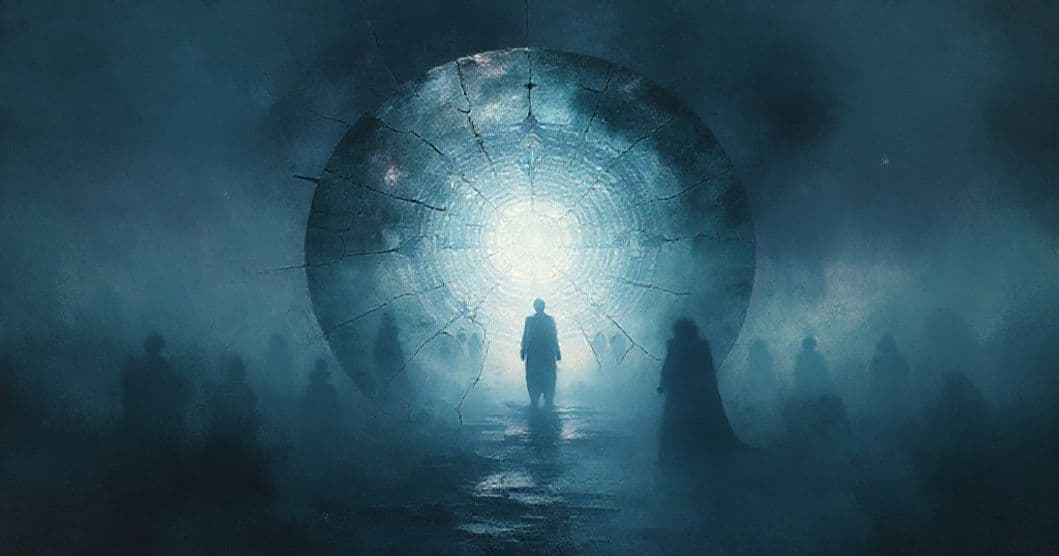Core Symbols: The Language of Marks and Reflections
In dreams, demon sigils are rarely random—a sigil is, by definition, an intentional symbol charged with meaning, and in this context, it becomes a visual cipher of your subconscious. Imagine tracing a glowing mark across a mirror’s surface: the act itself suggests an attempt to interact with, or even control, something unknown. The 'demon' element here isn’t inherently evil but rather represents a force you perceive as outside your control—anxiety, self-doubt, or unintegrated parts of your identity. A cracked mirror amplifies this tension, as it reflects not just your image but fractures of your psyche, while the sigil’s repetitive, almost ritualistic design hints at a need for order in chaos.
The mirror, a classic dream symbol of self-reflection, takes on new weight when paired with 'demon' imagery. In traditional occult lore, mirrors are seen as portals between worlds, and sigils as keys to unlocking them. In your dream, this becomes a metaphorical threshold: the mirror shows a version of yourself you fear or reject, and the sigil is the subconscious’s way of 'branding' that fear into your awareness. For example, if you trace a sigil on a mirror that shows your back turned, it might represent avoiding self-examination—a common defense mechanism when facing uncomfortable truths.
Psychology Lens: From Jungian Shadows to REM-Encoded Emotions
Want a More Personalized Interpretation?
Get your own AI-powered dream analysis tailored specifically to your dream
🔮Try Dream Analysis FreeCarl Jung’s concept of the shadow archetype offers a starting point: demons in dreams often embody the parts of yourself you’ve disowned or suppressed. The sigil, then, becomes a shadow’s signature—a mark you can’t ignore, even in sleep. Unlike Freud’s focus on repressed desires, Jung emphasized the shadow as a source of wisdom, not just danger. When a demon sigil appears, it’s less about 'sin' and more about 'unseen self' needing integration.
Neuroscience adds another layer: during REM sleep, the amygdala—the brain’s emotional processing center—remains active, turning ordinary thoughts into charged, symbolic experiences. Your brain uses culturally familiar symbols (demons, sigils) to make sense of raw emotional data, which is why these dreams often feel so visceral. Think of it as your mind’s way of 'tagging' emotions for later processing: the sigil is the tag, the mirror the folder, and the demon the content.
Cultural traditions offer contrast: in Japanese folklore, mirrors (kagami) reflect the true self, while in medieval grimoires, sigils were tools of protection. Your dream might be merging these—using the mirror as a protective threshold, the sigil as a shield against inner chaos. This duality explains why some find comfort in these dreams: they’re not warnings but invitations to confront the 'demon' within.
Life Triggers: When the Subconscious Calls for Attention
These dreams rarely appear in isolation; they’re often triggered by emotional crossroads. A job loss, for example, can shatter your sense of purpose, turning your reflection into a 'demon' of uncertainty. The sigil might then appear as a symbol of your attempts to regain control—maybe a logo from a past career, now warped into something threatening. Similarly, identity shifts (new relationships, parenthood) can create mirror dreams where the 'demon' is your fear of not measuring up.
Modern life amplifies this: social media’s curated 'mirrors' (profiles, likes) can blur the line between self and performance, turning the mirror into a 'demon' of inauthenticity. The sigil here might be a digital symbol—emojis, hashtags, or algorithmic patterns—representing the invisible chains of social validation. Even mundane stressors, like moving to a new city, can trigger these dreams as your mind grapples with the 'unknown' in your daily reflection.
Consider this anecdote: A woman dreamed of tracing a sigil on a bathroom mirror that showed her reflection with a demonic face. The next day, she realized she’d been avoiding a difficult conversation with her boss about workplace boundaries. The 'demon' was her fear of conflict, and the sigil was her subconscious urging her to 'mark' that boundary with clarity.
What To Do Next: From Dream to Daily Life
Start with short-term reflection: Keep a dream journal noting the sigil’s shape, the mirror’s condition, and your emotional response. Ask: Did the sigil feel like a barrier or a bridge? Did you trace it with fear or curiosity? This simple act of observation begins to separate the 'demon' from the emotion, turning it into data.
Medium-term experimentation: Create a personal sigil for self-compassion. Draw a symbol that feels empowering—a circle with a line through it (for boundaries), a spiral (for growth), or a star (for hope). Place it near your bathroom mirror or in your bedroom. This isn’t about magic but about reclaiming agency: your sigil becomes a visual reminder that you’re the one in control of your self-perception.
Long-term integration: Practice shadow work by journaling about the 'demon' you fear most. Write a letter to it, then rewrite it from your perspective—acknowledging its truth without letting it define you. This is how you transform the 'demon' from an external threat into an internal teacher. Remember: the mirror isn’t showing you an enemy; it’s showing you a part of yourself ready to be understood.
FAQ
Q: Are demon sigil dreams always negative? A: Not necessarily. They can signal growth when paired with curiosity over fear. If the sigil feels like a puzzle to solve rather than a monster to fight, it may reflect your subconscious’s need to process complex emotions.
Q: What if I don’t recognize the sigil in my dream? A: Unfamiliar sigils often represent new emotions or patterns emerging. Focus on how it made you feel, not what it 'means'—your intuition will guide you toward the relevant truth.
Q: How do I tell if it’s a 'demon mirror' or just a regular reflective dream? A: A 'demon mirror' distorts your reflection or feels oppressive, while a regular mirror dream reflects clarity. If the mirror acts as a barrier (you can’t touch your reflection) or the sigil feels like a warning, it’s likely a 'demon' signal.
